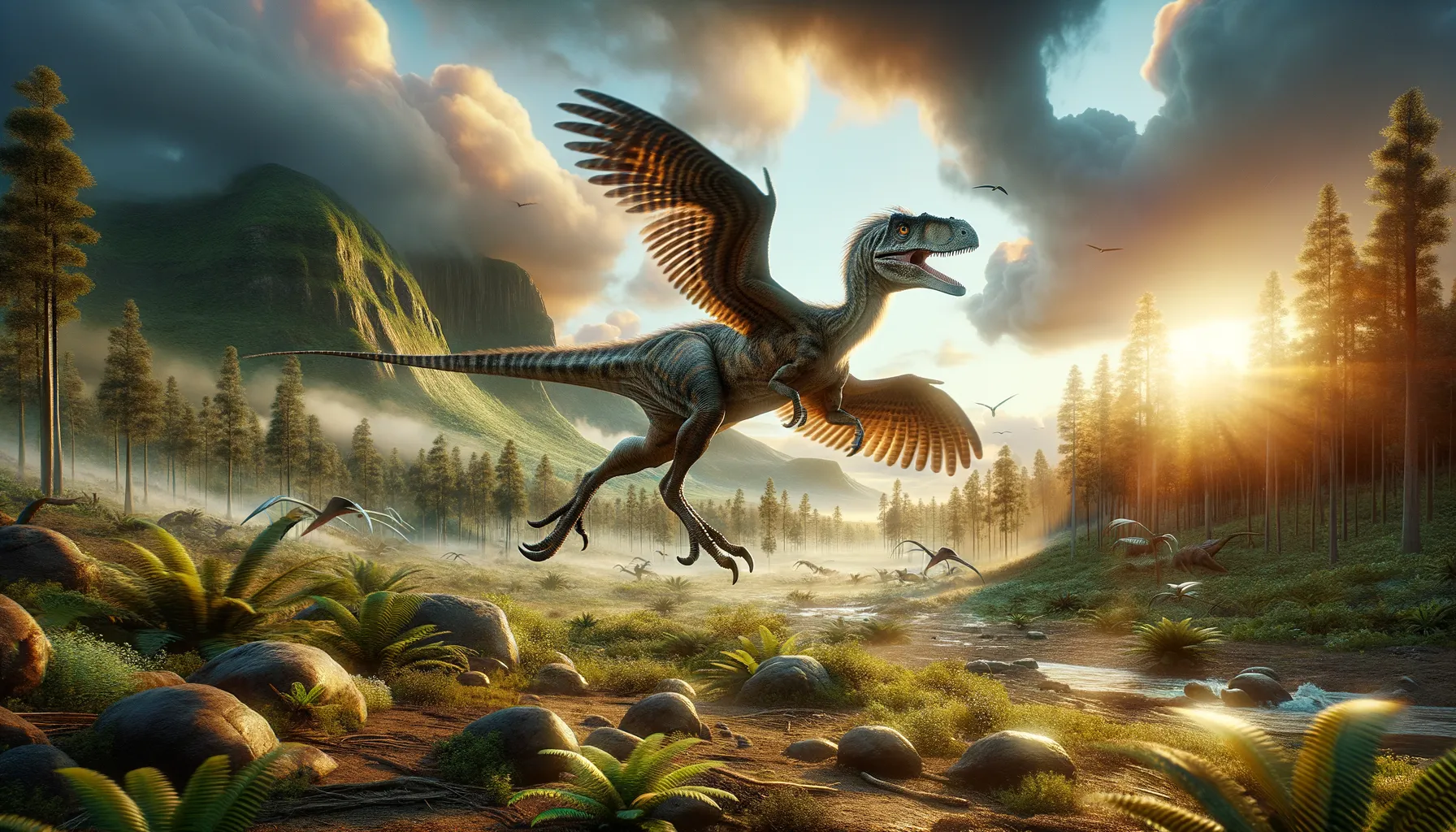
Hesperornithoides
A small predator bridging eras.
Period
Jurassic
Length
Roughly 3 feet (1 meter) long.
Height
About 1 foot (30 centimeters) tall.
Weight
Approximately 2.2 pounds (1 kilogram).
Hesperornithoides was a small, bird-like theropod dinosaur that lived during the Late Jurassic period. It was a member of the maniraptoran group, displaying characteristics that are closer to birds than most dinosaurs. This nimble predator was equipped with sharp teeth and agile limbs, allowing it to navigate its environment effectively. Its discovery has provided significant insights into the evolutionary transition of dinosaurs to birds.
Diet
Hesperornithoides was likely a carnivore, preying on small animals such as mammals and reptiles. Its diet might have also included insects and possibly other small dinosaurs.
Hunting
This dinosaur utilized its agility and speed to hunt small prey. Its sharp teeth and grasping hands suggest it was adept at catching and holding onto its victims.
Environmental challenges
Living in the Jurassic period meant facing fluctuating temperatures and varying food availability. Hesperornithoides had to deal with competition from other small predators. Additionally, it would have navigated environmental challenges presented by the diverse ecosystems, including forests and floodplains, of the Late Jurassic landscape.
Speed
Likely agile and quick due to its small size.
Lifespan
Estimated to be several years, typical of small theropods.
First discovery
Discovered in Wyoming in the Morrison Formation.
Fun Facts
- Hesperornithoides is a small, bird-like dinosaur that lived approximately 150 million years ago during the late Jurassic period.
- This dinosaur was discovered in Wyoming, USA, highlighting the rich dinosaur history of the region.
- Hesperornithoides is known for its relatively large brain compared to its body size, suggesting it was quite intelligent.
- Despite being bird-like, Hesperornithoides was not capable of sustained flight, though it might have been able to glide or leap.
- It is considered a member of the Troodontidae family, which includes other small, intelligent, and bird-like dinosaurs.
- The discovery of Hesperornithoides offers valuable insights into the evolution of flight and the close relationship between dinosaurs and modern birds.
- The fossils of Hesperornithoides were actually found in the remains of an ancient floodplain, which helps researchers understand the environment it lived in.
Growth and Development
Hesperornithoides likely grew rapidly after hatching to avoid predation. As it matured, it developed keen hunting skills and improved agility. The growth patterns suggest a life of continuous adaptation and learning in its dynamic environment.
Habitat
This dinosaur inhabited areas that were forested and rich in vegetation. Such environments provided ample coverage and resources for hunting and foraging. The presence of rivers and floodplains would have influenced its movements and daily life.
Interaction with other species
Hesperornithoides coexisted with a variety of other dinosaur species within the Morrison Formation. It competed with similar-sized theropods for resources. Interactions may have included avoiding larger predators and possibly engaging in territorial displays or conflicts with rival species.
Natural lifespan
Its natural lifespan was similar to other small theropods of the time.
Reproduction
Like many theropods, Hesperornithoides likely laid eggs. It may have built nests and exhibited parental care to safeguard its young. Nesting behaviors would have helped ensure the survival of its offspring in a perilous environment.
Social behaviour
Hesperornithoides may have displayed some degree of social behavior, possibly forming small groups or pairs especially during mating seasons. These groups could have provided protection and increased hunting efficiency.
Fossil locations
The primary fossils of Hesperornithoides have been found in the Morrison Formation in Wyoming, USA. These fossils have been crucial in understanding the link between non-avian dinosaurs and birds. The specific site included well-preserved skeletal remains that helped identify its phylogenetic position.
